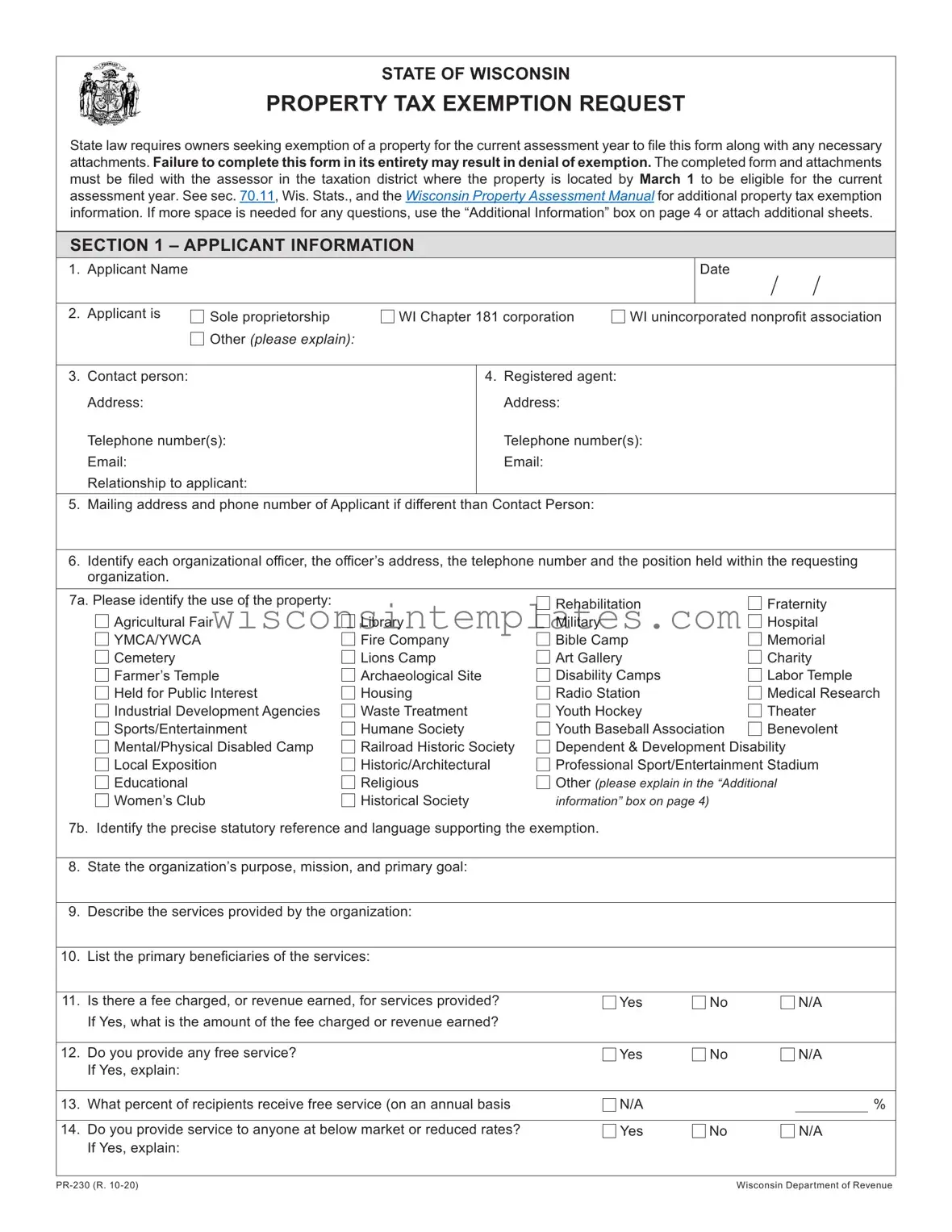Fill Out Your Wisconsin Pr 230 Template
The Wisconsin Pr 230 form is a document used to request property tax exemptions for certain properties in the state of Wisconsin. Property owners must submit this form, along with any necessary attachments, to the local assessor by March 1 to be considered for exemption in the current assessment year. Failure to complete the form accurately may lead to a denial of the exemption request.
Launch Editor Now
